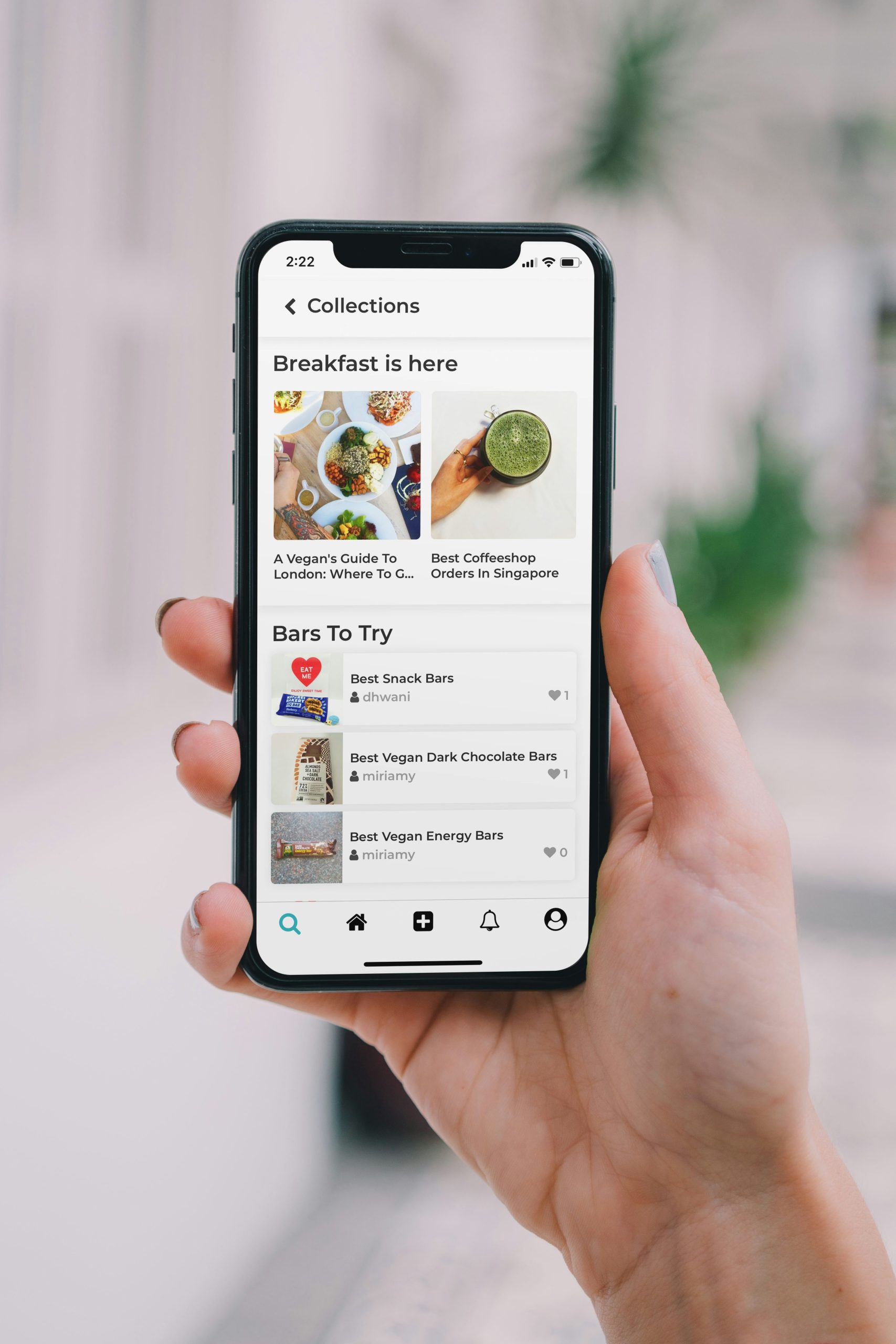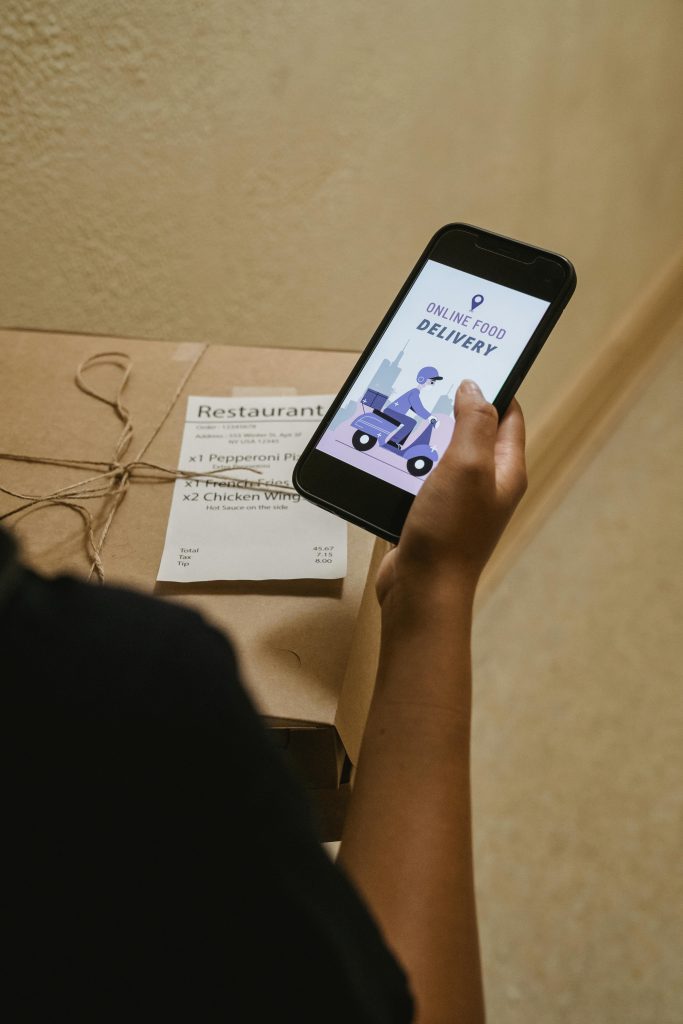
We’re lucky enough to work with a wide variety of amazing clients at Creative CX, across many different verticals including Luxury Fashion, Travel & Leisure, Broadcasting, Insurance, Banking, and also the fascinating Food Service industry.
And while many factors of running high quality experimentation and optimisation programmes remain the same, there are some unique aspects that our UXers, Strategy Consultants, Developers, and QAers have learnt over the years.
In this post, we’ll be exploring four particularly interesting aspects that are unique to the food industry and which are important to consider if you’re looking to maximise the effectiveness of your experimentation programme.
1. Hungry customers behave very differently
Many of your customers will of course be pretty hungry when purchasing on your food service websites and Apps. This means that unlike other industries, it’s key that you can deliver what the customer wants within a limited time frame.
Customer spending behaviour also varies significantly depending on the time of the week and the time of the day. Behaviour late at night, compared to lunch time, or just before evening dinner time, are completely different worlds.
We’ve found that people will make bigger orders at night when they’re hungrier and in the market for convenience, which opens up huge opportunities for delivering more personalised user experiences based on different times of the day, different audience types and levels of intent.
Hunger also drives a completely different behaviour in terms of urgency, where customers skip the research phase, ignore reviews, and make quicker, more spontaneous decisions all within a single visit during a short period of time.
For all these reasons, it’s critical that you don’t just blindly follow other e-commerce websites and best practices, or rely on just copying Amazon. You really don’t want to make your customers ‘H-angry’ customers!
This is why our team spends so much time understanding these unique behaviours and experimenting relentlessly to tailor the user experience and marketing efforts for the food service industry to maximise customer and business value.
2. Timing is everything

My mum once asked me in the early days of learning how to use her new iPad: “What time are these websites open until?” She assumed that they actually had set opening times and that she needed to complete her purchase before 5:30pm, or wait until the next day!
She soon came to realise that most e-commerce websites and apps are actually open 24/7 so you can do your shopping any time of the day, without worrying about closing time.
Well this isn’t actually the case in the food service industry. Food industry websites are not like most other e-commerce websites and apps! Many of the actual restaurants preparing the food shut at specific times depending on location and time zones. Therefore, the websites and apps need to adapt accordingly. There are dead times where the website cannot actually allow customers to order their food, with the only option being to pre-order for the next day.
The consequences of this are actually bigger than many think. In addition to how this affects customer behaviour, there are also some very practical considerations that the experimentation, or optimisation teams need to consider:
- When developing A/B tests, it’s crucial that Development and QA teams align with when the websites are actually open for delivery in each of the timezones that they are dealing with.
- The frequency and timing of experimentation cycles requires careful planning to align testing windows with peak periods.
3. Stock control must be considered
Another aspect that’s unique to food services is that each restaurant/store doesn’t have an endless supply of ingredients. The quality is carefully planned in advance in accordance with average orders and sales. They will therefore have a much greater supply of ingredients for their best-selling burgers, pizzas, or particular chicken dishes.
This is important because if an experiment involves trying to increase the demand of an alternative product on the menu, for example, changing priority order, increasing the visibility, or using personalisation to increase the likely uptake, this can actually cause serious issues for the restaurants/stores as they might not have the required ingredients, or products to fulfil the orders.
You could quickly run out of a product and at the same time have ample wastage of another, which is bad for customers and for the business.
The pressure on the supply chain of any activity needs to be taken care of when implementing an experiment.
One solution we’ve found to work is to limit the amount of stores/restaurants that are going to be included in the experimentation. While at the same time, ensuring that the digital teams are communicating crystal clearly with those who are taking part so that they have adequate supplies to cope with say a 5-10% uplift in the product mix that we’re trying to sell more of.
4. The importance of winning over the Franchisees

Lastly, the franchise model also adds a complex and fairly unique spin on experimentation, especially from the stakeholder management side of things. One of the key challenges is ensuring alignment and buy-in from diverse stakeholders across the franchise network, who own the customer experience at the point of delivery.
Managing franchises spread across different countries adds complexity to the process which we have learnt over the years. In some international Food Service businesses, each franchise can actually have individual sign-off and control over changes to their stores and websites. Coordinating these approvals and controls can present significant challenges, but it’s entirely manageable with the right approach.
You can overcome these potential difficulties by starting with a small group of franchises to run pilot tests to show proof of concept. These franchises can demonstrate the results and any uplift in revenue in the regional or quarterly franchisee meetings to show the value to those who may have reservations.
Communication and coordination across multiple franchise locations can be complex, requiring clear protocols and efficient data-sharing mechanisms. Overcoming these challenges requires a robust approach to experimentation that addresses the unique needs and constraints of franchise businesses.
Having learnt the best ways to approach these challenges to mitigate risks and win the hearts and minds of franchisees, we can say that it’s all worth the effort in the end. Once the franchisee see the benefits of embracing experimentation, they become our biggest advocates.
Conclusion
These unique aspects and challenges of running experimentation programmes in the Food Service Industry alongside the many other nuances that we’ve learnt over the years male this whole area a very exciting place to run experimentation.
There are so many opportunities to improve and innovate and this is why we’ve achieved such good results when it comes to customer and business metrics.
However, the most satisfying aspect of what we do isn’t just helping our clients to increase the number of orders, or the average order value by researching, designing and building 30 or 40 A/B/n Tests. We can have so much more impact by also helping our clients to establish and improve their own product experimentation and optimisation programmes. We do this by training and enabling their own teams and then scaling experimentation across their organisations, so that every team can experiment more effectively. This leads to an amplifying effect that delivers far greater value overall and also keeps all of this knowledge in-house.
If you’re interested in learning more about how experimentation can benefit your Food Service business, please get in contact.



